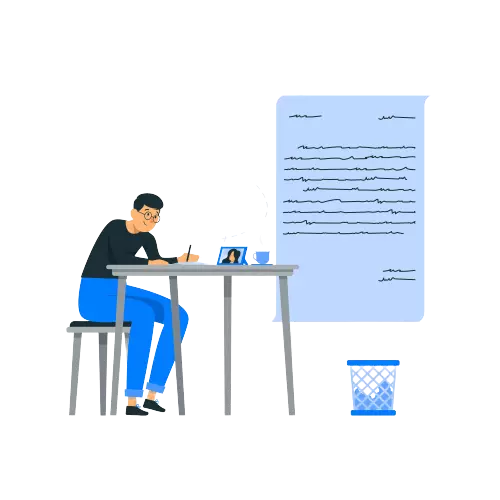In a digital age that’s rife with information, distinguishing between genuine, useful sources and those that are inaccurate or even deceptive has become an indispensable skill. Whether you’re a student, a professional, or simply someone navigating the vast ocean of online information, you must be equipped to discern the reliability of the sources you encounter.
The CRAAP Test is a straightforward checklist used to evaluate the sources’ credibility and relevance. Developed by the Meriam Library at California State University, Chico, CRAAP stands for Currency, Relevance, Authority, Accuracy, and Purpose.
What is the CRAAP Test?
The CRAAP Test is an acronym used as a checklist to help individuals evaluate the credibility and relevance of sources, especially in academic or research contexts. CRAAP stands for Currency, Relevance, Authority, Accuracy, and Purpose. Each of these criteria can help a researcher determine if a source is trustworthy and suitable for their needs.
The CRAAP Test was developed by librarians at California State University, Chico, as a tool for their students. However, its usefulness quickly spread, and it has since been adopted and adapted by many institutions worldwide as a straightforward method to evaluate sources critically.
Given the vast amount of information available on the internet, having a quick checklist like the CRAAP Test can help users discern high-quality sources from those that may be misleading, outdated, or biased.
What Does CRAAP Stand For?
An acronym for Currency, Relevance, Authority, Accuracy, and Purpose, the CRAAP Test offers a structured approach to evaluate the quality and credibility when working with a source of information.
Currency: The Timeliness of the Information
Currency refers to how recent the information is. In rapidly evolving fields like technology or medicine, several years old information can become obsolete.
Questions to Ask
- When was the information published or last updated?
- Are there newer sources or findings that might provide updated perspectives?
- Does your research topic require the latest information, or are older sources suitable?
Why It Matters
The pace at which new information is produced today is staggering. While some topics, like historical analyses, might be served well by older sources, others, especially in the sciences, require the most up-to-date data. Ensuring that your sources are current minimises the risk of relaying outdated or incorrect information.
Relevance: The Importance of the Information for Your Needs
Relevance considers whether the information meets your research or informational needs.
Questions to Ask
- Does the information relate directly to your topic or research question?
- Who is the intended audience? Is it too basic or advanced for your needs?
- Are there other sources that might be more applicable or provide a better perspective?
Why it Matters
A source might be highly credible and timely, but if it does not directly address your topic or answer your questions, it might not be suitable for your purposes. Always ensure that the information you include is directly relevant to your research or informational needs.
Authority: The Source of the Information
Authority pertains to the credentials of the author, publisher, or source of the information. It is vital to ensure that a trustworthy and knowledgeable source provides the information.
Questions to Ask
- Who is the author, publisher, or source of the information? What are their credentials?
- Is the source backed by a reputable institution or organisation?
- Are there contact details provided for further verification?
Why It Matters
The credibility of any piece of information is closely tied to the qualifications and reputation of its source. Academic articles, for instance, undergo rigorous peer review, ensuring that experts in the field have vetted the information. Recognising and relying on authoritative sources bolsters the reliability of your own research or conclusions.
The research done by our experts have:
- Precision and Clarity
- Zero Plagiarism
- Authentic Sources

Accuracy: The Reliability, Truthfulness, and Correctness of the Content
Accuracy ensures that the information presented is reliable, truthful, and free from errors.
Questions to Ask:
- Where does the information come from? Are there references or citations?
- Has the information been peer-reviewed or edited?
- Are there glaring errors, typos, or inconsistencies in the content?
Why It Matters
Information that is riddled with errors, whether factual, grammatical, or otherwise, loses its credibility. Verifying the accuracy of your sources ensures that your own work maintains a standard of reliability and truthfulness.
Purpose: The Reason the Information Exists
Purpose deals with the motivations behind the information. It assesses whether the content is meant to inform, persuade, entertain, or sell.
Questions to Ask
- Why was this information produced?
- Is there an apparent bias or slant? Is the author trying to sell something or advocate for a particular perspective?
- Who is funding the study or publication, and might they have an influencing stake in the information?
Why It Matters
Even the most accurate and timely information can be tainted by biases or ulterior motives. Understanding the purpose behind information helps in assessing its objectivity and reliability.
Examples of the CRAAP Test
Here is a breakdown with examples for each criterion:
Currency
Question: When was the information published or last updated?
Example: A webpage discussing the side effects of a medication that was last updated in 1998 might not have the most current information, especially if there have been new findings or updates about that medication in more recent years.
Relevance
Question: Does the information meet your needs? Is it appropriate for your audience or research?
Example: If you’re researching academic information about climate change, a basic children’s website about the topic might not be relevant. On the other hand, peer-reviewed articles or reports from recognised scientific organisations would be more appropriate.
Authority
Question: Who is the author or publisher? What are their credentials? Are they a reputable source?
Example: An article about brain surgery written by a certified neurosurgeon or from a recognised medical institution would have more authority than one written by someone without medical qualifications.
Accuracy
Question: Is the information supported by evidence? Can you verify the information from another source?
Example: If a webpage makes a claim that “90% of people have a certain condition” but provides no source or reference for that statistic, its accuracy is questionable.
Purpose
Question: Why was the information created? Is it biased or objective? Is the author/publisher trying to sell something or persuade you?
Example: A website run by a company that sells vitamin supplements might publish articles emphasising the importance of taking many different supplements. This could be biased information aimed at promoting their products.
Examples of CRAAP Test Using Different Sources
Here are examples of how you might apply the CRAAP Test to different types of sources:
-
Books
- Currency: Is the book’s publication date recent enough for your topic? Has a newer edition been released?
- Relevance: Does the content of the book relate directly to your topic? Is the book written at the right level (not too elementary or advanced)?
- Authority: Who is the author/publisher? Are they respected in the field? What are their credentials?
- Accuracy: Is the information well-researched and cited? Are there factual errors or biased views?
- Purpose: Why was the book written? To inform, entertain, persuade?
-
Example:
- A textbook on cellular biology from 1998 might not be as current as needed for the latest research, even if the author is a respected expert.
-
Journal Articles
- Currency: When was the article published? Is it the latest research on the topic?
- Relevance: Does the article address your research question directly?
- Authority: Who are the authors? What are their affiliations and credentials? Is the journal peer-reviewed?
- Accuracy: Are the research methods sound? Are the results and conclusions supported by evidence?
- Purpose: What is the intent of the research? Is there any evident bias?
-
Example
- A peer-reviewed article from a reputable journal in 2023 about climate change might be both current and authoritative.
-
News Articles
- Currency: How recent is the news? Does the event or issue still matter?
- Relevance: Does the news article offer depth on the topic you’re researching?
- Authority: Which publication produced it? Is the journalist experienced in the topic area?
- Accuracy: Are multiple sources used? Is the information verifiable?
- Purpose: Is the article news reporting, an opinion piece, or an advertisement?
-
Example
- An article from a tabloid in 2019 about a celebrity scandal may not be relevant or authoritative for a research paper on media ethics.
-
Web Sources
- Currency: When was the last update? Are the links still functional?
- Relevance: Is the information detailed and pertinent to your topic?
- Authority: Who hosts the website? Are they an expert or a recognised organisation in the field?
- Accuracy: Is the information well-sourced and free from errors? Can the information be corroborated elsewhere?
- Purpose: Why was this content posted online? To inform, sell, entertain, or persuade?
-
Example
- A personal blog post from 2010 about the dangers of vaccines, filled with anecdotes but no scientific references, would score poorly on accuracy and authority.
Frequently Asked Questions
Table of Contents
The CRAAP Test is a set of criteria used to evaluate the credibility and reliability of information sources. It stands for Currency, Relevance, Authority, Accuracy, and Purpose. By assessing each of these elements, users can determine the trustworthiness and relevance of a particular source for their research or informational needs.
To take the CRAAP Test, evaluate a source based on five criteria:
- Currency: How recent is the information?
- Relevance: Does it relate to your topic or answer your question?
- Authority: Who is the author or publisher?
- Accuracy: Is the information correct and well-sourced?
- Purpose: Why was it created? Bias or agenda?
Rate each criterion to determine the source’s overall reliability.
The CRAAP Test identifies five criteria to evaluate sources:
- Currency: Timeliness of the information.
- Relevance: Pertinence to the topic at hand.
- Authority: Source’s expertise or credibility.
- Accuracy: Truthfulness and correctness of the information.
- Purpose: Reason the information was produced, checking for potential bias.
The CRAAP Test is used to assess the credibility and reliability of information sources. In an age of information overload and potential misinformation, it offers a structured approach to discern trustworthy content. Users can make informed decisions about incorporating sources into research or projects by examining Currency, Relevance, Authority, Accuracy, and Purpose.
A good CRAAP Test score indicates a source is credible and reliable. While there’s no standardised numerical score, a highly rated source in Currency, Relevance, Authority, Accuracy, and Purpose is considered trustworthy. It is essential to weigh each criterion based on the research context and one’s informational needs.






